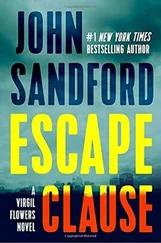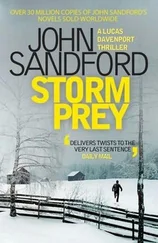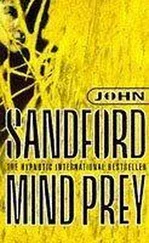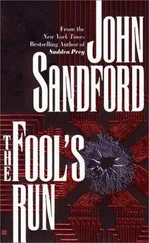But what to do with the Nixon ?
De-orbiting the ship was unthinkable. It was far too large to entirely burn up; something might survive and contaminate the world. Crash it into the moon? It’d have to be monitored as a hazardous waste site indefinitely.
The only smart place to send the ship was to the ultimate incinerator. The sun. The Divine Wanderer , the Celestial Odyssey ’s successor, could do the job; a ship that was designed to carry over a thousand tonnes of cargo wouldn’t have any problem pushing around the four-hundred-and-fifty-tonne Nixon . A little extra water reaction mass from some strap-on tanks, some newly fabricated attachment mounts, and the Martian transport became the world’s biggest and fastest tugboat.
The operation took a week.
On its second, and final, trip to the Nixon , the Divine Wanderer brought along service eggs, graphene cable, and sensor-laden tie-downs, and a full complement of riggers and jockeys. They’d only be pushing the poor Nixon at a few percent of a gee, but that was still several times more acceleration than the ship had been subject to before. A little extra rigging, just to make sure nothing broke loose. It was cheap insurance.
At six o’clock in the morning, Beijing time, President Santeros and General Secretary Hong jointly issued the orders to proceed.
The Divine Wanderer , grappled to the Nixon ’s cold, dead VASIMR engines, began to push. Its nuclear thermal rockets thrummed at a comfortable one-third power for the next day, as the Divine Wanderer pushed the Nixon away from the earth and against its orbital motion about the sun. When it was done, twenty-seven kilometers per second of fresh delta-vee canceled out all but a few kilometers per second of residual orbital velocity about the sun.
The Nixon ’s new course was confirmed. The Divine Wanderer released its grapples, turned tail, and headed back to Earth. The Nixon continued on, in a tight elliptical track with a perihelion of less than half a million kilometers. It would never complete a full orbit; the sun’s radius was seven hundred thousand kilometers.
In just over two months, the Nixon would hit the sun at over six hundred kilometers per second, at least those few refractory bits that hadn’t vaporized millions of kilometers out.
____
After six weeks of decontamination, the crew of the Nixon , and their Chinese guests, were released from biocontainment. The Americans were picked up, a few at a time, by Virgin-SpaceX shuttles, and returned to Earth.
John Clover was among the first to hit dirt: and feel the oppressive pull of Earth’s gravity. He’d lost weight in his time in space and had worked out religiously. Still, gravity was a trial. On the other hand, he’d get used to it in a couple of months, and he’d have better than a half-million dollars, his share of the Hump Pool. Made him laugh to think about it.
In New Orleans, he stepped from the government autolimo and checked out his house. It was different. The steps were freshly painted. For that matter, so was the whole fuckin’ house.
Crow had told him that the government would maintain it, but this…
“Aw, crap.” He palmed the front-door lock and the door opened. The hinges didn’t squeak. Crap-crap, he thought, if they’ve messed with my stuff…
Someone had straightened up the living room. Straightened up? They’d done a thorough cleaning, practically a remake. All his carefully tabbed and dog-eared papers and magazines, half-read books, the stacks of old journals by his chairs, all the stuff that had taken up eighty percent of the floor, it was all gone.
Assholes. It’ll take years to undo what some brain-dead “organizer” had done to his filing system, he thought. Hell, it’d probably take him years just to find where they’d put all his stuff, assuming they hadn’t thrown it out in some misguided fit of do-goodedness.
He needed a joint, he decided, hoping they hadn’t thrown out his stash. He stepped on the loose floorboard to the left of the entryway to the living room. The floorboard flipped up and he reached for the rusty tackle box below it. He grunted as he pulled it up. Heavy. Inside there were fresh, wrapped kilo bricks. He peered at the label. They were from the government research farm in Kentucky.
An envelope was taped to one of the bricks, with a letter and a card inside. The letter said he was an authorized owner of the dope under federal law; the card identified him as a federal research subject, exempting him from Louisiana’s antiquated prohibitions.
Both were signed by the surgeon general.
The card said:
See what the nanny state can do for you? Welcome home, John. I’ll call you. I need some jambalaya.—C.
Well, I will be blown, Clover thought, as he rolled a joint. He stepped outside to light it up: a calico cat sat on the neighbor’s fence, a thin, feral feline. The cat narrowed his eyes and meowed, just once. Food?
“Back in a minute,” Clover said to the cat. He’d always had a weakness for calicoes. He meowed once, and went back inside to look for the cat crunchies.
Good dope, even the possibility of a new cat.
Wonder if everybody gets this kind of welcome?
____
No. They didn’t.
Fiorella said good-bye to Sandy at the back of the shuttle. “This whole criminal thing is bullshit,” she said. “I’ll do everything I can. I think I can probably do a lot. Santeros owes me. We’ve already got a petition going, almost everybody in the crew signed it.”
“Thank you. For everything,” Sandy said. “You gonna give me a kiss good-bye?”
“If I do, are you gonna try to squeeze my ass?”
“Maybe. Okay, maybe not.”
She gave him a peck on the cheek and said, “Everything will work out.”
“I know it will. I’ll be seeing you around.”
The FBI was waiting at the bottom of the stairs.
Whatever else had been said and done, Santeros still needed a scapegoat.
Sandy was arrested, placed in solitary confinement in Los Angeles, and the next day was flown to Washington, where he’d stand trial in federal court. Santeros had nixed a court-martial for the simple reason that nobody had actually taken the time to reactivate Sandy’s commission in the army.
He had excellent attorneys. His father visited him every day and made it very clear that Santeros was going to get a half billion (or so) of adverse political advertising shoved down her throat at the next election cycle.
The trial itself was quite short, since the charges were designed to be undeniable. Sandy didn’t bother to deny them, and pled nolo contendere. Most of the trial involved the pre-sentencing hearing, in which two dozen Nixon crew members defended Sandy’s actions as necessary, sane, and probably the salvation of the ship; and former military colleagues represented him as an unsung hero.
Fiorella wasn’t allowed to cover the case, because of the obvious conflict of interest, but she’d been interviewed on the top-rated CBSNN show Sweet Emotion and, in her Ultra-Star way, had dampened half the hankies in America.
The prosecutor, a civil servant but determined opponent of everything Santeros stood for, asked that Sandy be given forty years, as a way to embarrass her. The judge, a Santeros appointee, had been listening to the witnesses, too, and had a friendly conversation with an old college buddy currently working at the Justice Department; he cut the sentence as short as he possibly could.
Sandy got five years, in Leavenworth.
On the first day of winter, he was taken out of the Washington federal courthouse in handcuffs and leg chains. Onlookers and former cell mates thought he looked unreasonably cheerful for a man facing hard time at Leavenworth.
Читать дальше








